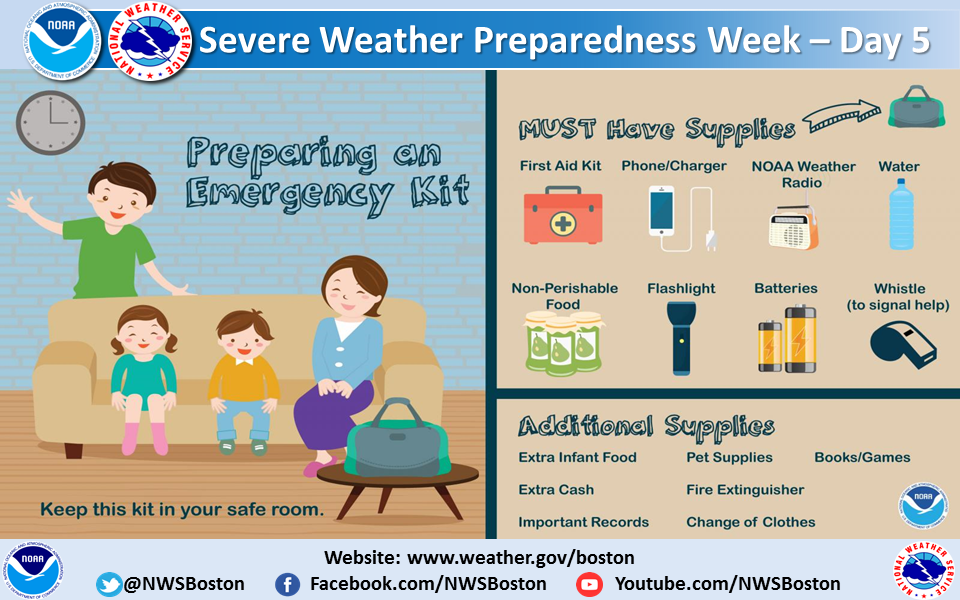Severe Weather Awareness: Protecting Yourself And Your Family From Floods

Table of Contents
Recognizing Flood Warning Signs and Understanding Flood Types
Flooding comes in various forms, each posing unique challenges. Knowing the types of floods and recognizing warning signs are vital for effective flood risk assessment.
- Flash Floods: These rapid, sudden floods are often caused by intense, localized rainfall, and can occur with little to no warning. Flash flood warning sirens and alerts from weather apps are crucial.
- River Floods: These floods develop more slowly as rivers and streams overflow their banks due to prolonged rainfall or snowmelt. Rising water levels are a key indicator.
- Coastal Floods: These floods occur along coastlines due to storm surges, high tides, and tsunamis. Coastal flood watches and warnings are issued by meteorological agencies.
Visual cues indicating potential flood risk include:
- Rapidly rising water levels in rivers, streams, or creeks.
- Heavy and persistent rainfall.
- Overflowing rivers or streams.
- Standing water in unusual areas.
Official flood warnings and alerts are disseminated through various channels, including:
- National Weather Service (NWS) website and app.
- Local news broadcasts and weather reports.
- Emergency alert systems (e.g., wireless emergency alerts).
Creating a Family Emergency Plan for Floods
Pre-flood planning is paramount to ensuring your family's safety. A well-defined family emergency plan should include:
- Evacuation Routes and Meeting Points: Identify multiple escape routes from your home and designate safe meeting points both nearby and further away. Consider different scenarios, such as nighttime evacuation.
- Emergency Kit Checklist: Prepare a comprehensive emergency kit containing:
- Water (at least one gallon per person per day for several days).
- Non-perishable food supplies.
- First-aid kit with essential medications.
- Important documents (copies of insurance policies, identification, medical records).
- Flashlight, batteries, and a hand-crank radio.
- Communication Protocols: Establish a contact person outside the affected area to serve as a central point of contact for family members. Share contact numbers with each family member.
- Pet Safety: Include plans for pet evacuation and temporary shelter. Identify pet-friendly evacuation centers or shelters in advance.
Protecting Your Home from Flood Damage
Implementing flood mitigation strategies can significantly reduce the risk of damage to your home.
- Elevate Electrical Outlets and Appliances: Raise electrical outlets and appliances several inches above the potential flood level.
- Install Flood Barriers or Sandbags: If appropriate, install temporary flood barriers or sandbags around your property to divert water away from your house.
- Improve Drainage: Ensure proper drainage around your home to prevent water from accumulating near your foundation.
- Flood Insurance: Consider purchasing flood insurance, even if you live in a low-risk area. Standard homeowner's insurance policies typically do not cover flood damage.
Actions to Take During a Flood
When a flood occurs, immediate action is crucial.
- Evacuate Immediately: If instructed to evacuate by authorities, do so immediately and without delay.
- Never Drive Through Flooded Areas: Floodwaters can be deeper and faster-moving than they appear. Even a few inches of water can sweep a car away.
- Stay Away from Downed Power Lines: Downed power lines pose a significant electrocution risk.
- Seek Higher Ground: Move to higher ground if evacuation isn't immediately possible.
- Monitor Weather Reports: Continuously monitor weather reports and follow instructions from emergency officials.
Post-Flood Recovery and Safety
Post-flood recovery requires careful attention to safety and proper procedures.
- Contact Your Insurance Company: Report the flood damage to your insurance company as soon as possible.
- Avoid Contact with Floodwater: Floodwater is often contaminated with sewage and other hazardous materials. Avoid contact to prevent illness.
- Inspect for Structural Damage: Carefully inspect your home for structural damage before re-entering.
- Dispose of Flood-Damaged Items Safely: Dispose of flood-damaged items according to local regulations to prevent further health hazards.
Conclusion: Prioritizing Severe Weather Awareness for Flood Safety
Preparing for floods is crucial for safeguarding your family and property. By understanding flood risks, developing a comprehensive family emergency plan, implementing flood mitigation strategies, and knowing the actions to take during and after a flood, you can significantly improve your chances of surviving and recovering from this devastating natural disaster. Become proactive in your flood safety by creating a comprehensive severe weather awareness plan today. Learn more about flood preparedness and protection by visiting [link to relevant resource]. Share this information with your friends and family to promote community-wide flood safety and preparedness.

Featured Posts
-
 Ardisson Baffie Accusations De Macho Et Reponse De L Animateur
May 26, 2025
Ardisson Baffie Accusations De Macho Et Reponse De L Animateur
May 26, 2025 -
 Former Israeli Female Soldiers Demand Gaza Captive Release
May 26, 2025
Former Israeli Female Soldiers Demand Gaza Captive Release
May 26, 2025 -
 Feature Film To Detail Wrongful Arrest At Glasgow Airport
May 26, 2025
Feature Film To Detail Wrongful Arrest At Glasgow Airport
May 26, 2025 -
 F1 Drivers The Unexpected Style Icons Of The Season
May 26, 2025
F1 Drivers The Unexpected Style Icons Of The Season
May 26, 2025 -
 Paris Roubaix Bottle Throwing Incident Spectator Surrenders To Police
May 26, 2025
Paris Roubaix Bottle Throwing Incident Spectator Surrenders To Police
May 26, 2025
Latest Posts
-
 Metallica Announces Hampden Park Gig In Glasgow World Tour Dates Revealed
May 30, 2025
Metallica Announces Hampden Park Gig In Glasgow World Tour Dates Revealed
May 30, 2025 -
 Hoffenheim Vs Augsburg Kramarics Penalty Saves The Day
May 30, 2025
Hoffenheim Vs Augsburg Kramarics Penalty Saves The Day
May 30, 2025 -
 Metallicas Glasgow Hampden Park Concert World Tour Stop Announced
May 30, 2025
Metallicas Glasgow Hampden Park Concert World Tour Stop Announced
May 30, 2025 -
 Dublin 2026 Metallicas Two Night Aviva Stadium Concert
May 30, 2025
Dublin 2026 Metallicas Two Night Aviva Stadium Concert
May 30, 2025 -
 Andrej Kramarics Penalty Hoffenheim Hold In Form Augsburg
May 30, 2025
Andrej Kramarics Penalty Hoffenheim Hold In Form Augsburg
May 30, 2025
